Discover 15 hidden attractions, cool sights, and unusual things to do in Passau (Germany). Don't miss out on these must-see attractions: St. Stephen's Cathedral, St. Michael's Church, and Veste Oberhaus. Also, be sure to include Stadttheater Passau in your itinerary.
Below, you can find the list of the most amazing places you should visit in Passau (Bavaria).
Table of Contents
St. Stephen's Cathedral
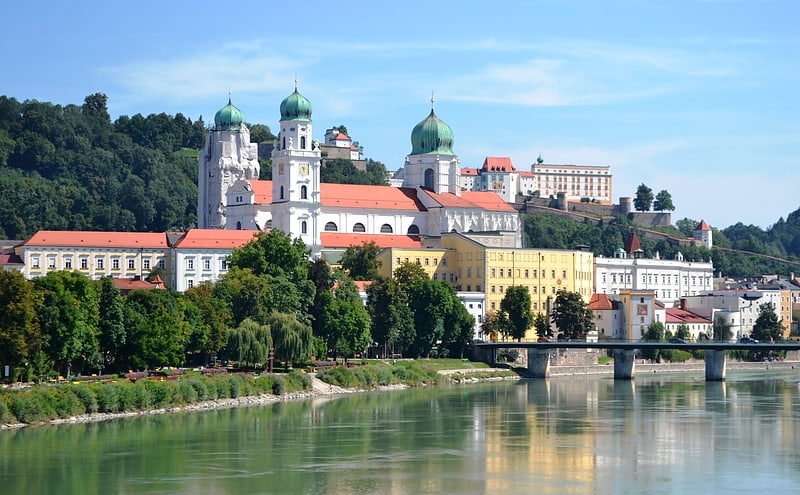
Also known as: Dom St. Stephan
Baroque place of worship with frescoes. St. Stephen's Cathedral is a baroque church from 1688 in Passau, Germany, dedicated to Saint Stephen. It is the seat of the Catholic Bishop of Passau and the main church of his diocese.
Since 730, there have been many churches built on the site of the current cathedral. The current church, a baroque building around 100 metres (328 ft) long, was built from 1668 to 1693 after a fire in 1662 destroyed its predecessor, of which only the late gothic eastern side remains. The cathedral's overall plan was made by Carlo Lurago, its interior decoration by Giovanni Battista Carlone, and its frescos by Carpoforo Tencalla.
Passau Cathedral's used to be the largest organ in the world. It still is the largest church organ outside USA. Over time, it has been outgrown by more recent instruments, for instance Wanamaker's organ in the USA.
The organ currently has 17,774 pipes and 233 registers, all of which can be played with the five-manual general console in the gallery. Portions of the organ have their own mechanical-action or electric-action consoles, for a total of six consoles.
The cathedral has eight large bells in the bell rooms in the north and south towers. The heaviest,"Pummerin" at 7550 kg cast in 1952 and "Sturmerin" weighing 5300 kg cast in 1733 hang in the south tower. The other six bells hang in the north tower. They include: "Misericordia" weighing 6000 kg, the Angelus bell, "Predigerin", "Elfuhrglocken", the Choir bell, and "Dignitar". A ninth bell, the "Zeichenglocke" hangs near the sacristy door.[1]
Address: Domplatz 9, 94032 Passau
St. Michael's Church
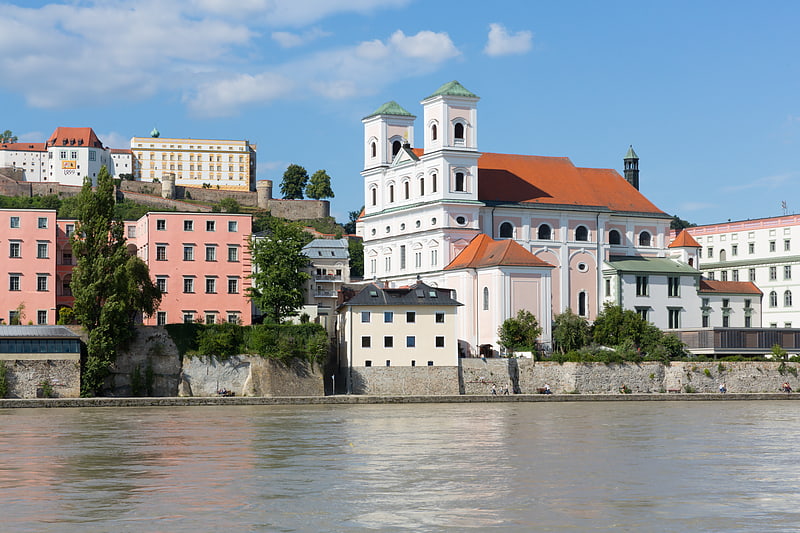
Also known as: St. Michael
Catholic church in Passau, Germany. St. Michael's Church is a 17th church in Passau, Bavaria, Germany with later additions in the baroque style. It is attached to the Leopoldinum School, Passau.[2]
Veste Oberhaus
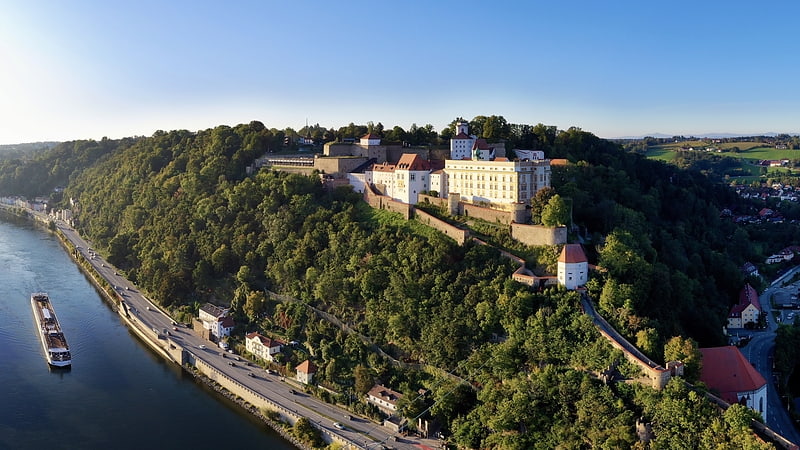
Museum in Passau, Germany. Veste Oberhaus is a fortress that was founded in 1219 and, for most of its time, served as the stronghold of the Bishop of Passau, Germany. It is currently the site of a museum, a youth hostel, and a restaurant, as well as an open-air theatre dating to 1934.
The fortress is located on the mountain crest (St. Georgsberg) on the left side of the Danube between it and the Ilz, and dominates the old city of Passau, which it faces across the Danube. Below Oberhaus on the promontory between the two rivers is Veste Niederhaus, part of the fortress system.[3]
Address: Veste Oberhaus 125, 94034 Passau
Stadttheater Passau
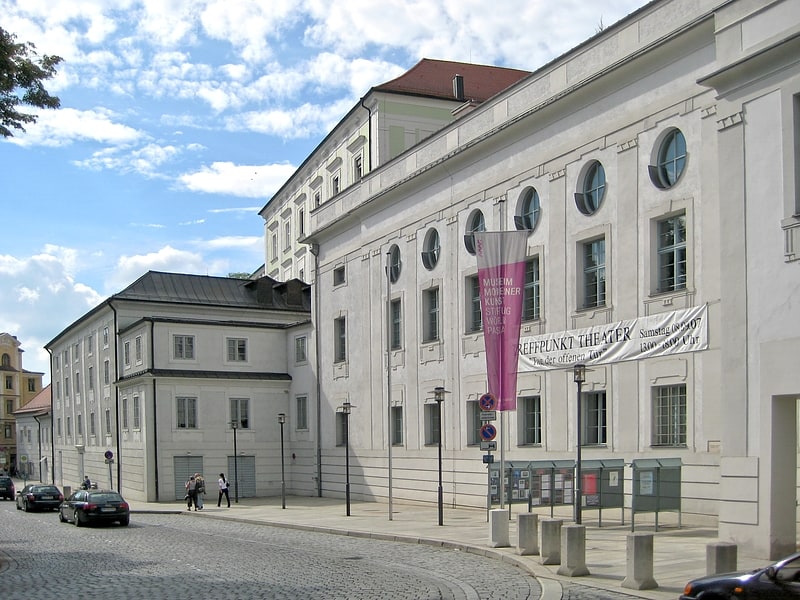
Theatre in Passau, Germany. Stadttheater Passau is a theatre in Passau, Bavaria, Germany.[4]
St. Nikola
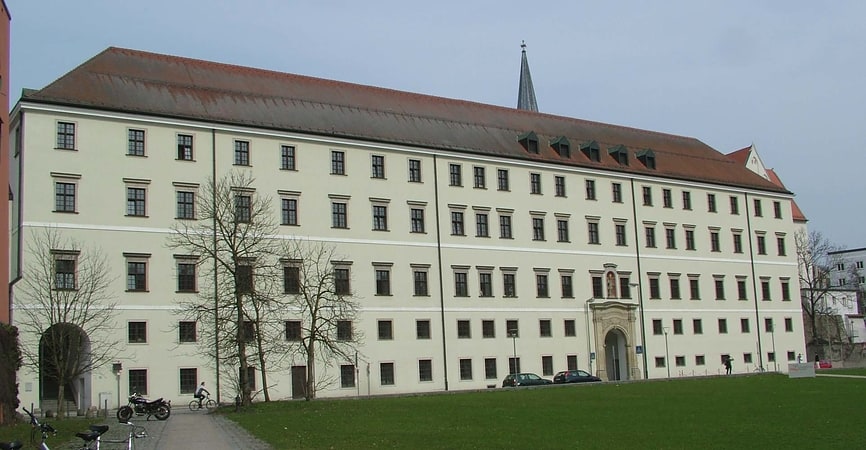
Monastery. The St. Nikola Abbey is a former monastery of the Augustinian canons and today's mother house of the German Oratory Sisters in Passau, Lower Bavaria, Germany.[5]
Luitpoldbrücke in Passau
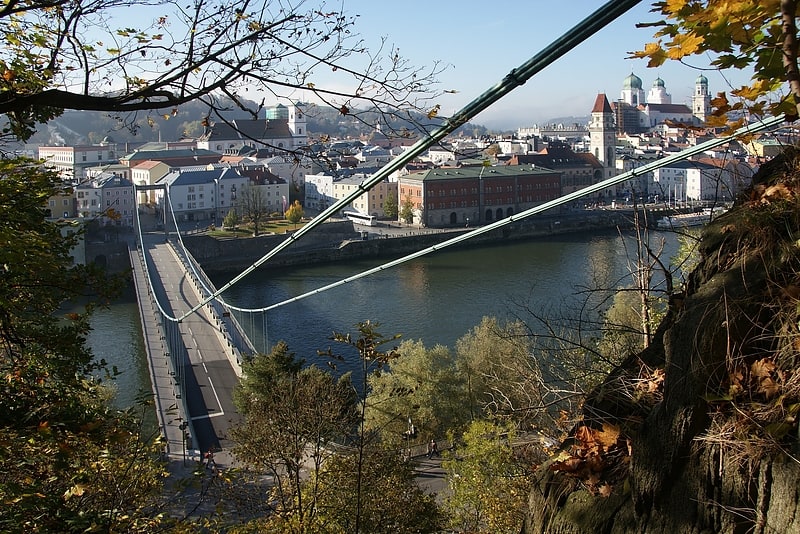
The Luitpold Bridge is a 208 m long suspension bridge in Passau, which connects the tip of the old town with the Angerstrasse below the Veste Oberhaus shortly before the Ilz flows into the Danube. With a span of 126 m, the structure has spanned the Danube at river kilometer 2225.750 since 1910. On the south side, the suspension cables are guided over a pylon and anchored in the foundation soil with anchor blocks; on the north side, they are anchored in a rock face below Veste Oberhaus.
The bridge was planned as a replacement for a pedestrian suspension bridge built in 1869 about 100 m downstream, whose wire cables were badly damaged by corrosion around 1900. Initial considerations in favor of an inexpensive bridge design with iron crescent girders towering high above the river led to numerous protests directed against a feared destruction of the cityscape. In the end, the decision was made in favor of a much more elaborate cable suspension bridge, which was wider and more load-bearing than the old pedestrian bridge but, like the latter, hardly interfered with the cityscape or landscape due to its filigree supporting structure made of wire cables.
First, two 25 cm steel cables, each with a breaking strength of 960 tons, were tensioned across the Danube. From a pontoon platform, the assembly of 40 cross girders took place. The sidewalks on both sides of the roadway were covered with reinforced concrete slabs and the road was paved. It was inaugurated in 1911 and has normal pylons on the Passau side and only small pylons on the slope side, where the supporting cables are anchored in the ground.
Shortly before the end of the Second World War on May 2, 1945, immediately before the invasion of U.S. troops, the bridge was partially blown up. Donations and support from the Bavarian ministries made it possible to repair the bridge relatively quickly and reopen it to traffic on August 17, 1948. The engineer Rudolf Barbré played a major role in the reconstruction.
With a clearance of only 5.15 m above the Highest Shipping Water Level (HSW 2010) (5.95 m at the crest; neighboring bridges have 7.70 and 9.50 m, respectively), it is one of the lowest bridges over the Danube for Danube navigation.
In 2017 and 2018, a general renovation of the bridge took place.
Old City Hall
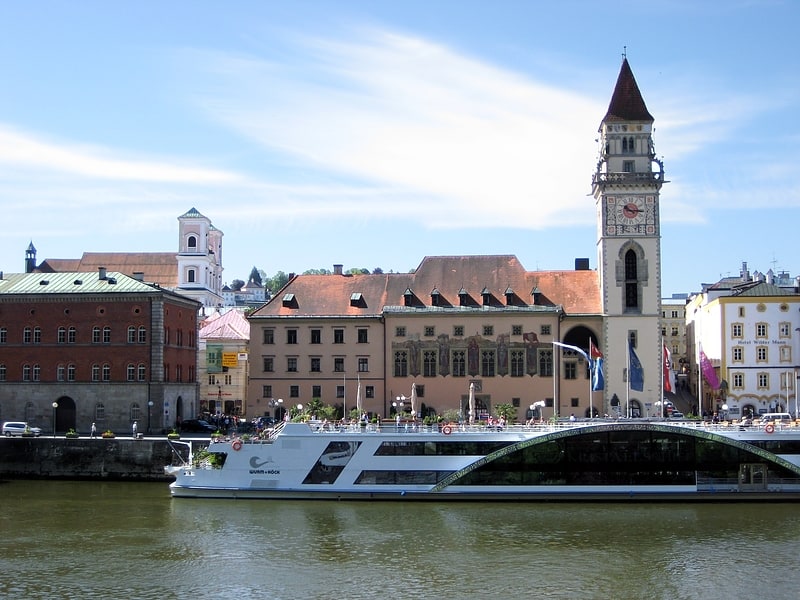
The town hall is located in the old town of Passau on Rathausplatz, near the banks of the Danube. The Passau City Hall complex consists of three buildings on Rathausplatz: the Old City Hall, the New City Hall, and the Old Main Customs Office City Hall.
Address: Rathausplatz 2, 94032 Passau
Museum Moderner Kunst
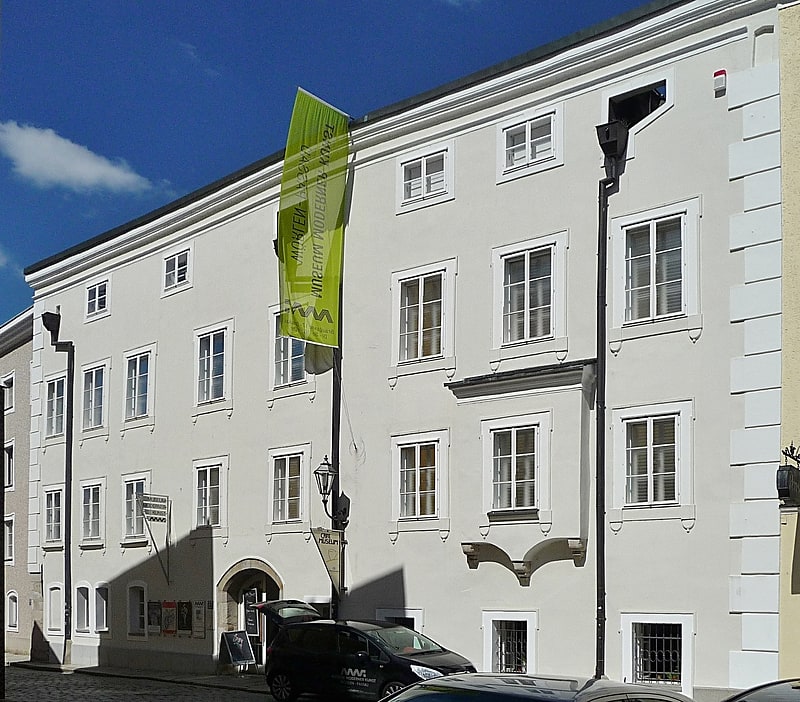
The Museum of Modern Art Wörlen is an art museum in the old town of Passau, donated in 1990 by the architect and art patron Hanns Egon Wörlen. It sees itself as a forum for modern and contemporary art at the gateway to neighboring countries to the east, and aims to bring East and West closer together.
Address: Braeugasse 17, 94032 Passau
University of Passau
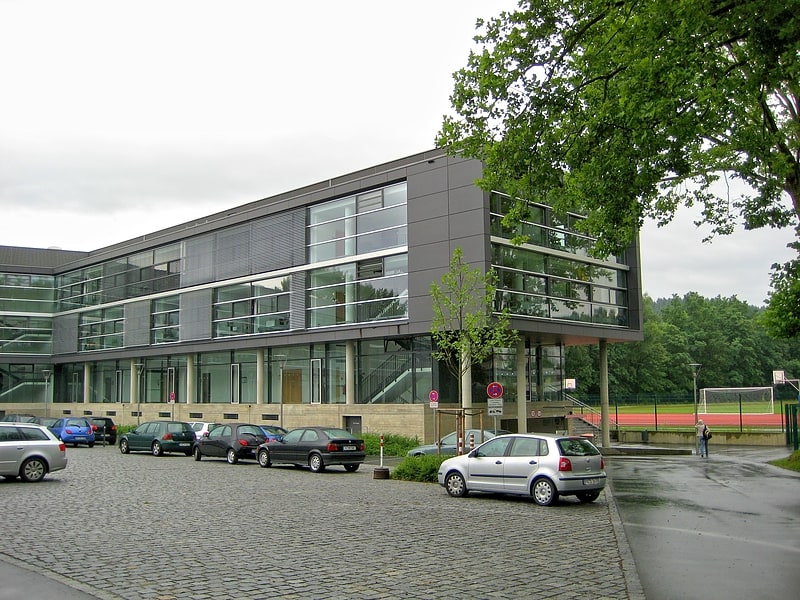
Also known as: Universität Passau
Public university in Passau, Germany. The University of Passau is a public research university located in Passau, Lower Bavaria, Germany. Founded in 1973, it is the youngest university in Bavaria and consequently has the most modern campus in the state. Nevertheless, its roots as the Institute for Catholic Studies date back some hundreds of years.
Today it is home to four faculties and 39 different undergraduate and postgraduate degree programmes.[6]
Address: Innstraße 33 (IM 244), Passau
Oberhausmuseum

The Oberhaus Museum is housed in one of the largest preserved castle complexes in Europe, the Veste Oberhaus, in Passau. The exhibition area of the museum covers 4000 m² in different parts of the building. The history of the city and the region is presented here. A total of eight exhibition complexes as well as the Batterie Linde lookout point can be visited through a circular route.
Address: Oberhaus 125, Passau
Pfarrkirche Sankt Paul
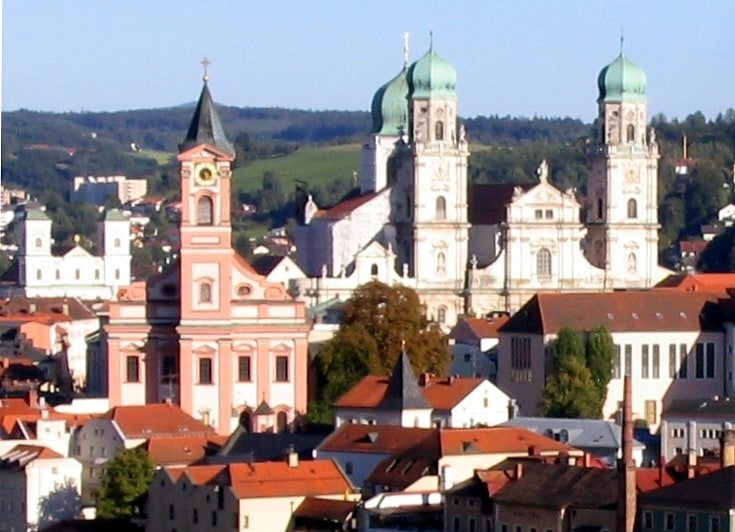
The city parish church of St. Paul is the oldest parish church in Passau.
The first church was dedicated to St. Paul already around 1050. After the destruction by fires in 1512 and 1662, the present building was erected in 1678.
At St. Paul's Arch, the northern gate to the old town, a flight of steps leads up to the single-towered church, decorated in cream and pink. The master builder is Carlo Antonio Carlone. The original very flat spire of the 17th/18th century was replaced in the second half of the 19th century by a high pointed spire. This was taken down in 1950 because of alleged dilapidation and rebuilt with only about a third of its height. Since then, the tower is only the second highest church tower in Passau after the cathedral. In the interior, the black, gilded altars and the similarly colored pulpit stand out against the light-colored walls. The large high altar from around 1700 bears a painting by Franz Werner Tamm depicting the beheading of the apostle Paul. The side altars and the pulpit were made between 1678 and 1689, and the painting Beweinung Christi (1689) is by Johann Michael Rottmayr. The sparse stucco was not installed until 1909.
RömerMuseum Kastell Boiotro - Passau
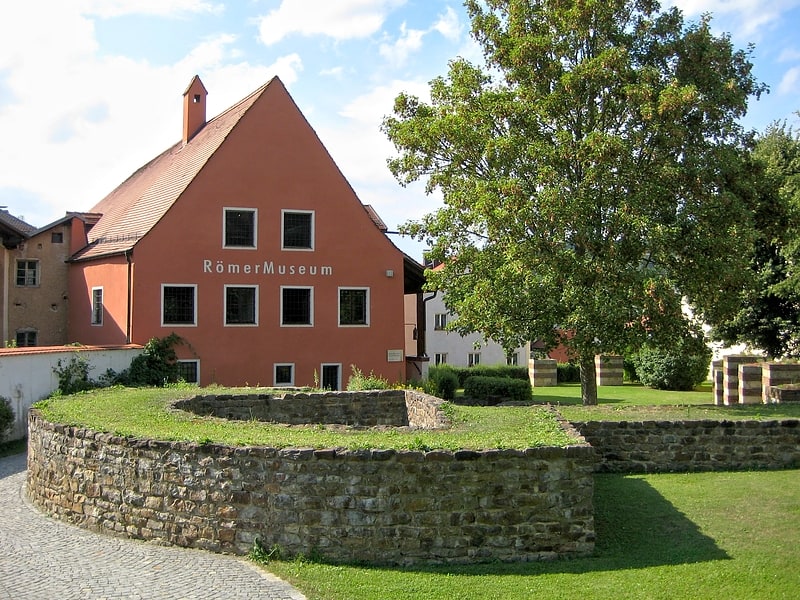
The Roman Museum Fort Boiotro is a museum located in the Innstadt district of Passau. It was opened in 1982. The museum stands on the foundations of the late Roman fort Boiotro, remains of the military fortification can be seen in the outdoor area of the museum. Saint Severin, missionary of Noricum, probably had a monastery built in the ruins of the Roman fort at the end of the 5th century; in any case, through his records the name Boiotro has been preserved to the present day.
Address: Lederergasse 43, Passau
Neue Residenz
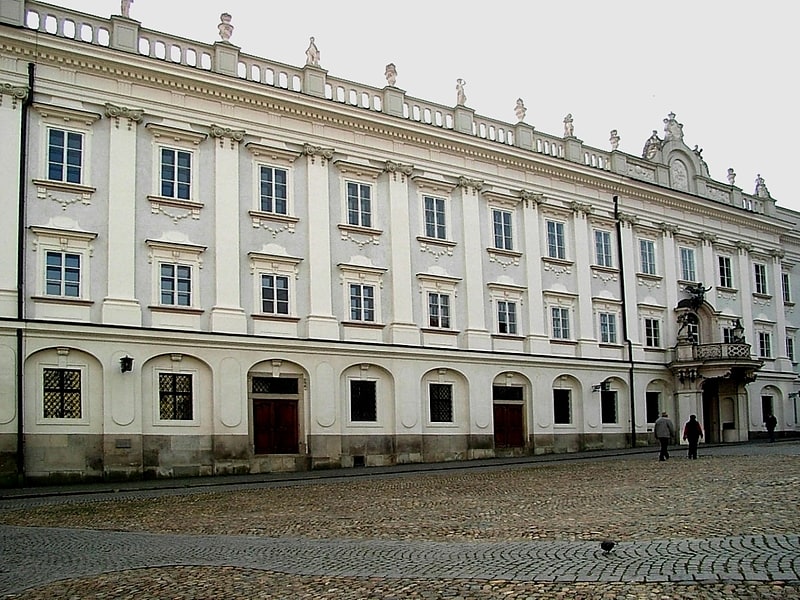
The New Episcopal Residence of the Prince-Bishops of Passau was built from 1712 to 1730 in the style of the Viennese late Baroque. The architects were probably the Italian Domenico d'Angeli and the Viennese Antonio Beduzzi. The complex is listed as an architectural monument of Passau under file number D-2-62-000-486.
Address: 8 Residenzplatz, Passau
Auersperg-Gymnasium Passau Freudenhain
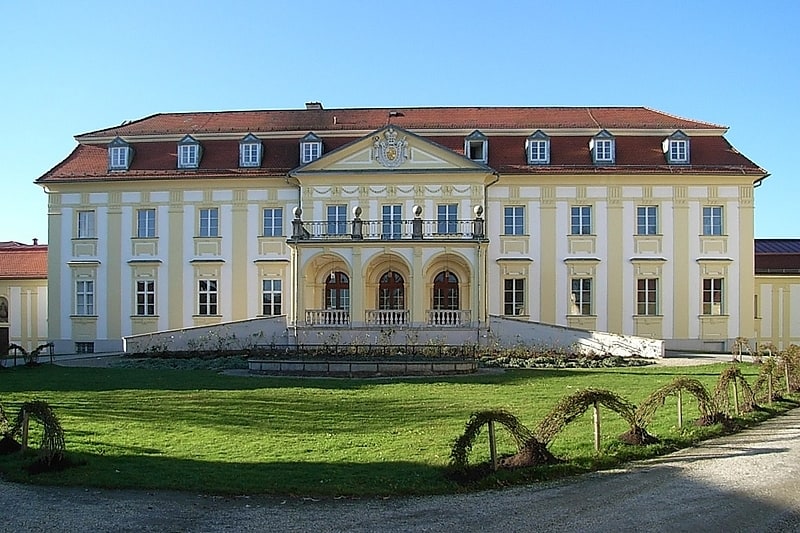
Freudenhain Castle is located in the urban area of Passau in a park of the same name on the north bank of the Danube. The complex was built from 1785 to 1792 by the Passau prince-bishop Cardinal Joseph Franz Anton Graf von Auersperg as a summer residence. The architect and master builder was Johann Georg von Hagenauer. The castle has been used as a school for over a hundred years. The complex is listed as an architectural monument of Passau under file number D-2-62-000-663.
Address: 2 Freudenhain, Passau
St. Salvator
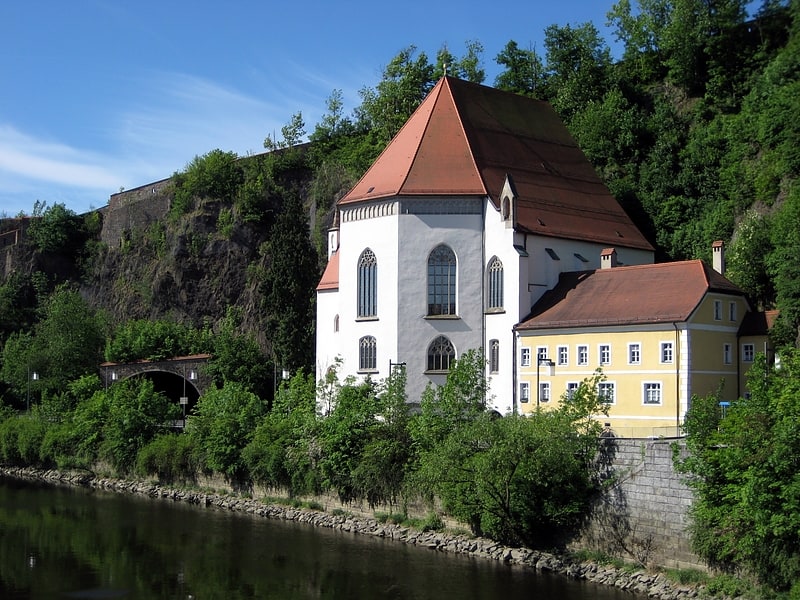
The side church of St. Salvator in Passau is located on the banks of the Il on the Georgsberg directly below the Veste Oberhaus. North of the church is the former provostry from 1501.
Address: 3 Ferdinand-Wagner-Straße, Passau